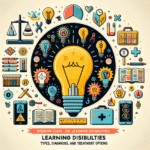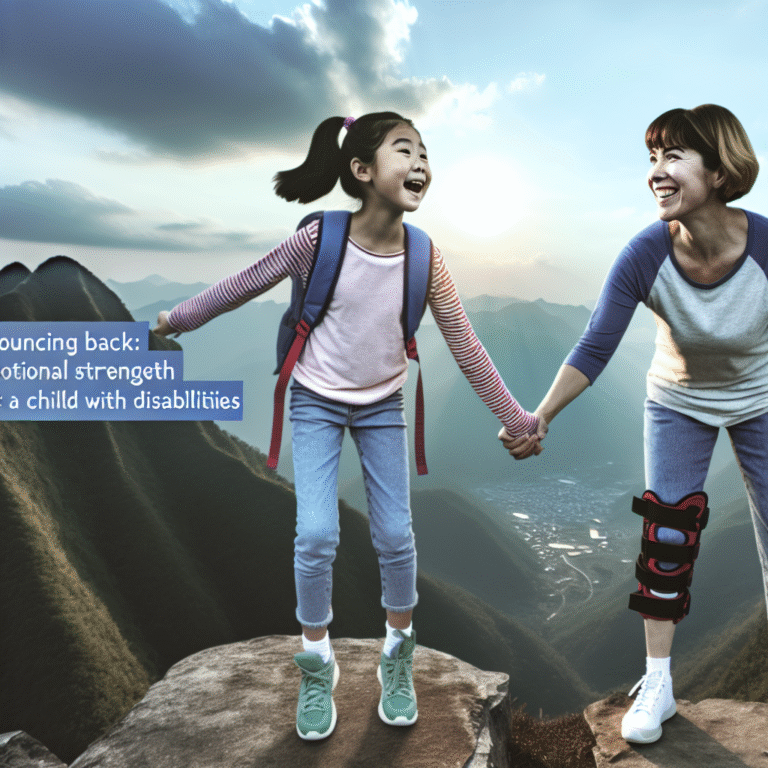
Understanding the Connection: How Learning Disabilities Impact Behavior – The Essential Guide
Introduction
Imagine a world where learning is seamless, where every student absorbs knowledge effortlessly and thrives in a vibrant educational environment. Unfortunately, this isn’t the reality for everyone. Learning disabilities affect millions of children and adults worldwide, influencing not just their academic performance but also their behavior and emotional health. Understanding the Connection: How Learning Disabilities Impact Behavior is crucial for parents, educators, and society at large. This article delves into the intricate relationship between learning disabilities and behavior, providing unique insights that can empower those affected to navigate challenges more effectively.
The Landscape of Learning Disabilities
What are Learning Disabilities?
Learning disabilities (LD) are neurological disorders that affect the brain’s ability to receive, process, store, and respond to information. They can manifest in various forms, impacting skills such as reading (dyslexia), writing (dysgraphia), and mathematics (dyscalculia). The complexity of these disabilities often leads to distinctive behavioral patterns that raise questions around emotional regulation, social interactions, and overall mental health.
Prevalence and Impact
According to the U.S. Department of Education, approximately 5% of students in public schools receive special education services for learning disabilities. This prevalence indicates that understanding the connection between these disabilities and behavior is essential for creating supportive environments conducive to learning and personal growth.
Understanding the Connection: How Learning Disabilities Impact Behavior
Emotional Responses to Learning Challenges
Individuals with learning disabilities often experience frustration and anxiety in academic settings. This emotional turmoil can manifest in behavior patterns such as withdrawal from social situations or disruptive behavior in the classroom. Recognizing how these emotional responses correlate with learning challenges is vital for offering appropriate support.
Case Study: Charlie’s Journey
Charlie, a 10-year-old diagnosed with dyslexia, struggled with reading comprehension, leading to increased anxiety during reading exercises. His frustration resulted in behavioral outbursts, where he would lash out at classmates or refuse to participate in group activities. By providing Charlie with emotional support and tailored instructional strategies, his teachers observed a significant reduction in aggressive behaviors and improved engagement in class.
Social Skills and Peer Relationships
Social interactions play an essential role in a child’s development. Learning disabilities can significantly impact how children navigate social landscapes. Difficulty with communication and processing social cues can lead to challenges in forming friendships and maintaining peer relationships.
Case Study: Emily’s Experience
Emily, a 12-year-old with Asperger’s syndrome, faced challenges in understanding social norms. Her difficulty in interpreting non-verbal cues often led to misunderstandings. For example, during a group project, she was unaware of her classmates’ frustration with her direct communication style. Through behavioral therapy focusing on social skills training, Emily developed strategies to enhance her interactions, ultimately improving her peer relationships.
Behavioral Indicators of Learning Disabilities
Behavioral indicators provide insight into how learning disabilities negatively affect children. Observing these patterns can help educators and parents better understand and address the root causes of challenging behaviors.
Common Behavioral Indicators
- Frustration and Avoidance: Students may avoid tasks they associate with failure.
- Impulsivity: Difficulty concentrating can lead to impulsive behaviors in the classroom.
- Mood Swings: Emotional regulation issues might result in sudden mood shifts or outbursts.
Understanding these indicators can help adults offer timely interventions and support.
The Role of Intervention in Behavior Management
Creating Supportive Environments
Supportive environments play a critical role in positively influencing behavior for those with learning disabilities. Tailored educational approaches, such as differentiated instruction and positive reinforcement, can lead to more effective learning experiences.
Table 1: Teaching Strategies for Positive Behavior Management
| Strategy | Description |
|---|---|
| Differentiated Instruction | Tailoring lessons to meet diverse learning needs. |
| Positive Reinforcement | Reinforcing desirable behaviors to encourage repetition. |
| Social Skills Training | Teaching students how to interact appropriately in social situations. |
| Mindfulness Techniques | Implementing practices to enhance emotional regulation. |
Parent and Teacher Collaboration
Collaboration between parents and teachers is essential for successful interventions. Open communication allows for consistent behavioral strategies across home and school environments.
Case Study: The Collaboration Strategy
In a Boston-based elementary school, a collaborative model between parents and teachers was implemented for a student named Jake, diagnosed with ADHD. Regular meetings between Jake’s family and school staff enabled the sharing of successful techniques for managing impulsivity and frustration, resulting in decreased behavioral incidents at school and increased academic engagement at home.
The Importance of Early Diagnosis and Intervention
Identifying Learning Disabilities Early
Early diagnosis and intervention play a significant role in shaping students’ academic and behavioral outcomes. Identifying learning disabilities as soon as they manifest allows for timely educational support and resources.
Analysis: The Long-term Benefits
Research indicates that children who receive early intervention for learning disabilities are more likely to achieve better academic performance, improved self-esteem, and better behavioral outcomes in the long run.
Supporting Emotional Health
Integrating emotional well-being into the learning process is essential. Providing resources that promote self-advocacy, coping strategies, and resilience can significantly impact a child’s behavior and overall mental health.
Strategies for Professionals and Families
Implementing Effective Strategies
- Foster Open Communication: Encourage discussions about feelings and educational challenges at both home and school.
- Utilize Educational Tools: Leverage resources such as assistive technology which can help in learning and emotional management.
- Promote Social Interaction: Facilitate group activities where children can practice social skills within safe environments.
Maintaining a Positive Outlook
It’s essential for both families and educators to maintain a positive outlook when working with children who have learning disabilities. Reinforcing the idea that these challenges can be managed with the right strategies fosters a growth mindset.
Conclusion
Understanding the Connection: How Learning Disabilities Impact Behavior provides a roadmap for navigating the complex interplay between learning challenges and behavioral manifestations. By recognizing the emotional, social, and cognitive aspects of learning disabilities, we can foster environments that empower individuals to thrive academically and socially.
As we champion awareness and understanding, we contribute to the creation of inclusive and supportive educational settings. It’s imperative that we approach this issue with compassion and a commitment to effective strategies that inspire resilience in the face of adversity.
FAQs
1. What are the most common types of learning disabilities?
The most common types of learning disabilities include dyslexia, dyscalculia, dysgraphia, and nonverbal learning disabilities.
2. How can parents support children with learning disabilities?
Parents can support their children by maintaining open lines of communication, seeking appropriate educational resources, and advocating for their child’s needs within the school system.
3. What role do educators play in managing behavior associated with learning disabilities?
Educators can create inclusive environments, employ tailored instructional strategies, and promote positive behavior through reinforcement and support.
4. Can learning disabilities be diagnosed later in life?
Yes, learning disabilities can be diagnosed later in life, though earlier diagnosis often allows for more effective interventions.
5. How can we foster resilience in children with learning disabilities?
Encouraging a growth mindset, providing emotional support, and celebrating small victories can help foster resilience in children with learning disabilities.
By addressing the connection between learning disabilities and behavior, this article provides actionable insights for those affected and challenges societal perceptions, paving the way for strengthening inclusivity in education.









